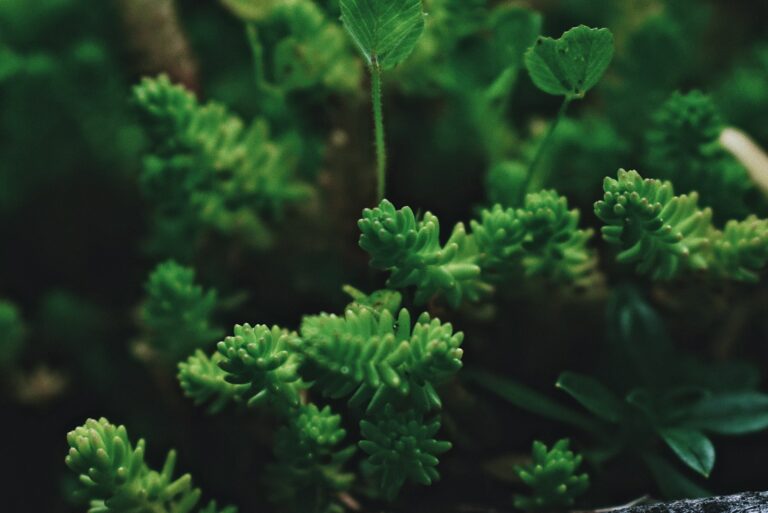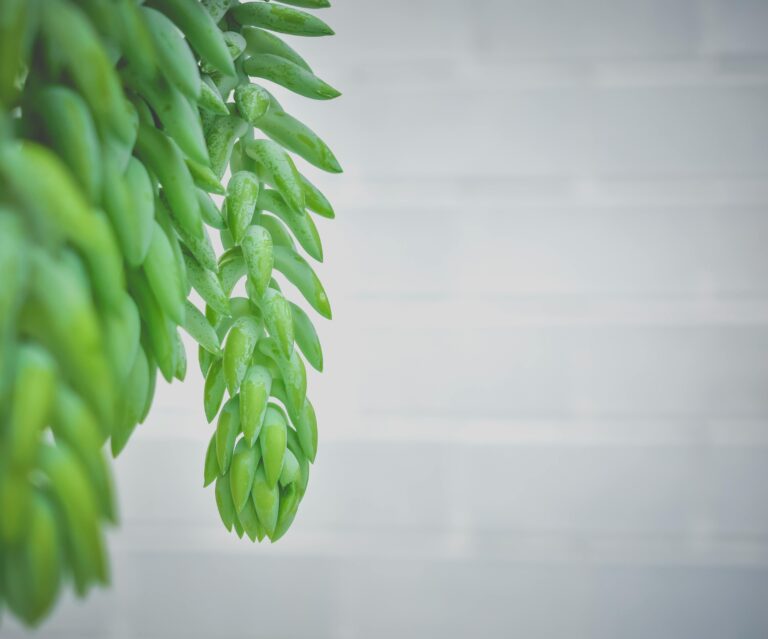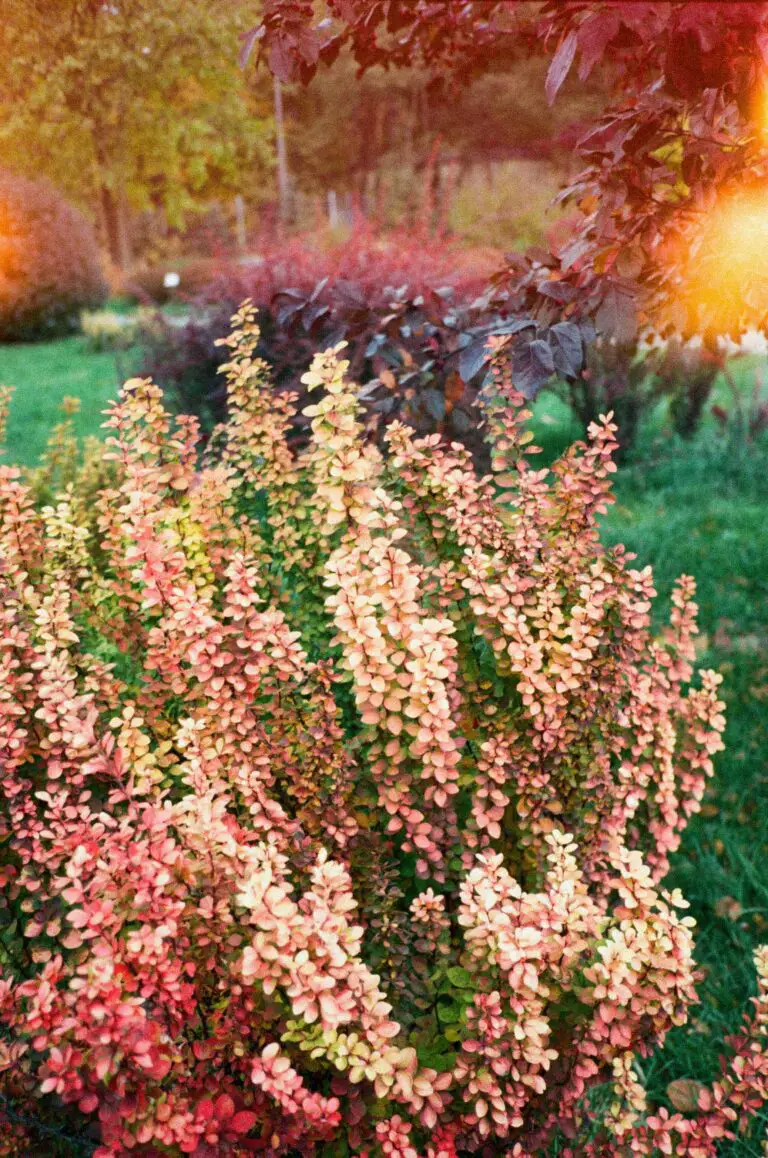Introduction to Sedum
Picture this: You’re walking through a vibrant garden, your eyes drawn to a low-lying carpet of luscious greens and fiery reds, speckled with starry blooms. This, my friends, is the magical world of Sedum, known to the layperson as ‘stonecrop’. For those dipping their toes into the gardening realm or those weathered green thumbs looking to refresh their landscapes, sedums are not just an option; they are the new trendsetters in garden design.
Imagine an effortless charm that spreads over rockeries or green roofs, requiring minimal care yet offering maximum impact—sedums are versatile performers, equally home in a quirky container as they are in sprawling flower beds. They bear witness to countless real-life garden success stories, where their drought-tolerant nature has rescued many a forgetful gardener.
Originating from cold mountains to hot deserts, sedums are global citizens adorning our living spaces with their hardy disposition. Deep dive into the fascinating care practices of these plants, and you’ll find your gardening aptitude growing as robustly as the sedum itself. Are you in a tricky spot with partial shade and worried about what will flourish there? Well, some shade-tolerant varieties of stonecrop would love to prove their worth. By adopting sedum into your plant family, you’ll join a growing community of enthusiasts who appreciate the art of simplicity in gardening.
Their rising popularity isn’t a fluke; it’s a testament to their undeniable allure and ease of care, making them ideal for novice gardeners and seasoned pros yearning for a low-maintenance love affair with their outdoor sanctuary.
The Correct Way to Pronounce Sedum
Ever find yourself in the garden, chatting about your latest plant obsession, only to stumble upon the utterance of the word ‘sedum’? Let’s clear the air and uncover the mystery behind this botanical term’s pronunciation. Whether you’ve stumbled upon its vibrant foliage at a friend’s backyard oasis or are contemplating adding a dash of sedum splendor to your own green haven, knowing how to articulate this term with finesse can make all the difference.
First things first, let’s break it down phonetically. Imagine you’re basking under the open sky, a gentle breeze tossing the ‘s’ to the front of your lips; that’s how you’ll start off — with a clear and crisp /ˈsiːdəm/. It’s like ‘see them’ but merge the words to ‘see-dum’. Think of ‘seed’ and then picture yourself humming ‘um’ to a tune. Blend these sounds together, and you’ve got yourself the name of one of Mother Nature’s most resilient creations.
Regional dialects might add their unique twist to this succulent’s name, but sticking to the aforementioned keeps you in the botanical know-how. For an in-depth guide, get a sonic peek at the Cambridge Dictionary’s pronounciation of sedum — they’ve nailed their phonetics.
Now picture this: You’re attending your local garden club meeting, and you casually drop into conversation, “The ‘see-dum’ in my rock garden is thriving, despite last week’s downpour!” Not only will your peers nod appreciatively at your cultivation success, but they’ll also be impressed with your pronunciation savvy. It’s a win-win that sprouts from the correct articulation of this versatile plant.
Need regional variants to suit your accent or locality? Hook ’em in with a little anecdote about how your ‘see-dum’ might sound more like ‘see-dum’ when you’re down South or how your keen British neighbor fancies calling it /siː-dəm/. If you’re particularly animated, mimic these accents and share a laugh!
Understanding the right pronunciation of ‘sedum’ isn’t just about getting the sounds right; it’s about embracing the plant’s identity in your daily gardening lexicon. While we’re on the topic of identities and correctness, why not delve further into the plant’s world? Check out our article on how sedum plants flourish, which doesn’t just explore the correct name-saying but also unravels the secrets to their thriving existence.
Ready to engage all senses? See the lush greens and bursting blooms of the ‘see-dum’ through this visual delight. Behold, the sedum in all its glory:

Equipped with the phonetics, garnished with a dash of cultural charm, and topped with stunning visuals — this is how your garden’s vernacular blossoms. The next time ‘sedum’ rolls off your tongue, you’ll ooze the confidence of a seasoned green thumb, expertly versed in the language of the leaves.
Why Pronunciation Matters in Gardening
If you’ve ever asked for ‘see-doom’ at your local nursery and received blank stares, you’re not alone. The word is actually pronounced ‘sed-uhm,’ and it’s just one example of how the garden world is brimming with botanical Latin that can trip us up. Pronouncing plant names correctly may seem like a minor detail, but it can be crucial for effective communication among gardening enthusiasts, horticulturists, and nursery operators.
Consider the moment when you find yourself at a plant swap, excitedly talking about your latest ‘sedum’ addition. Your pronunciation sets the tone for the conversation; say it correctly, and you’re instantly part of the in-crowd, with the doors of horticultural camaraderie wide open. But get it wrong, and you might find the flow of shared gardening wisdom comes to an abrupt stop. It’s not just about fitting in—it’s about exchanging valuable information without the barriers of miscommunication.
And let’s talk about those moments in nurseries or garden centers. Clear pronunciation acts as a bridge between you and the plant experts who can guide you to the right soil amendments or pest control methods for your precious ‘sed-um.’ Mispronounce it, and you might get directed to a completely different section, wasting both your time and theirs.
Sharing experiences online also benefits from proper pronouncing—especially in our age of gardening vlogs and forums. Imagine posting a video with the incorrect pronunciation and the avalanche of correcting comments that could follow. Not only does it interrupt the flow of sharing experiences, but it also detracts from the credibility you’re aiming to build.
But fear not, we’ve got resources at our fingertips to nail those tricky names. Like this helpful video that helps demystify the pronunciation of ‘sedum’ and alike. Give it a watch, and soon you’ll be speaking ‘horticulturalese’ like a seasoned pro!
Now, armed with the correct pronunciations, you can confidently go forth, discuss and swap tips on the drought-tolerant ‘sedums’ that are perfect for your low-water garden. With a common language established, the garden gates are open, and the botanical world is your oyster—or should we say, your ‘SEE-duh-m’!
Overview of Sedum Varieties
Ever wandered through a rockery or marveled at a green roof blooming with life? Chances are, you’ve encountered the versatile and visually captivating sedum. These hardy succulents are a gardener’s dream, with a plethora to choose from, each bringing its own splash of color and texture to the table. Sedum, pronounced “SEE-dum,” offers gardeners a forgiving palette with which to work, making garden design both fun and rewarding.
Popular Types and Their Pronunciations
Take ‘Autumn Joy,’ for instance, a variety that greets the fading light of fall with blooms that shift from pink to a rich copper. It’s as simple to say as it is stunning to look at – just as it reads. Then there’s ‘Dragon’s Blood,’ dripping with intrigue and an unforgettable name, adorned with crimson flowers that demand attention. And let’s not forget the ever-so-frosty ‘Cape Blanco,’ with its silver-green leaves that provide an alluring contrast to any plant cohort.

The sedum landscape isn’t complete without a nod to the vertical virtuoso, ‘Coral Carpet.’ This one cascades gracefully over rock walls and container edges, boasting coral-hued blooms that welcome pollinators from near and far. When you’re conversing with fellow green thumbs, it’s “Coral Carpet” – the rolling ‘r’ providing just the right flourish to match its showy nature.
It’s evident that sedums aren’t just about the visual feast they offer. Pronunciation plays a pivotal role too, adding a layer of character to each variety. Aspiring horticulturists or seasoned garden gurus can both appreciate the richness in the names of these resilient plants. For more detailed insight on succulent care, including the dos and don’ts, peek through our comprehensive guide to ensure your sedums not only survive but truly thrive.
Whether draped over stones, nestled in nooks, or complementing taller companions, sedum varieties like ‘Blue Spruce,’ ‘Gold Mound,’ and ‘Voodoo’ are more than just plants – they’re a narrative in themselves, each with an easy-to-master name that’s as engaging as their appearance. So next time you hear someone say “SEE-dum,” you’ll know there’s a world of variety and vibrancy waiting to be explored and expressed in your very own garden tapestry.
Sedum Plant Care Essentials
Hey there, green thumbs and plant enthusiasts! Are you ready to become a sedum superstar? These plump, perky succulents are not just a feast for the eyes; they’re also an absolute breeze to take care of. Stick with me, and I’ll walk you through the basic ‘Sedum Care 101’ to make sure your plants are thriving faster than you can say “sedum how to pronounce” correctly!
First off, sunlight – sedum’s BFF. Your plump little friends love to bask in the sun, soaking up those rays to keep their colors vibrant and their structure stout. But remember, they’re like that one friend at the beach who needs an umbrella after a couple of hours; partial shade is crucial to prevent sunburn during the heat of the day.
Now, let’s talk hydration. Think of watering your sedum like you’re binge-watching your favorite show: it’s all about balance. You don’t want to flood your succulent’s personal space (root area) with too much H2O. A good soak every now and then does the trick – allow the soil to dry out between waterings, mimicking their natural arid homelands, and your sedum will be eternally grateful.
Going Underground: Soil Secrets for Sedum Success
Soil is the stage, and your sedum is the star of the show. Dash in a soil mix that’s akin to a top-notch dessert – light, fluffy, and with excellent drainage. Add some perlite or coarse sand to the potting mix, and you’ve got yourself a Michelin-starred setting for your sedums to flourish in.
It’s not all sunshine and dry soil, though. Like any good drama, there’s a twist – common issues. But have no fear; most of these are as easily sorted out as finding the remote in the couch cushions. Overwatering is the usual culprit, so keep an eye out for squishy leaves. That’s your sedum’s way of saying, “I’m full, thanks!”
And for a live demo, here’s a smashing video that puts those fall sedum chores into perspective:
In a nutshell, caring for your sedum plants is as effortless as saying their name (once you’ve got the pronunciation down, of course). A little sun, sparse water, well-drained soil, and you’re all set. Keep an eye out for the telltale signs of too much love (water), and you’ll have the happiest sedum on the block. Now, go on and be the sedum whisperer you were born to be!
Incorporating Sedums in Your Garden
Imagine creating a lush greenscape that’s not only a feast for the eyes but also effortless to maintain. That’s the beauty of sedums, my friends. These succulent superstars are the unsung heroes of the horticultural world, and incorporating them into your garden is easier than you might think. But how do you make these versatile plants stand out in your outdoor sanctuary? Let’s dive in!
Designing with Diversity in Mind
Sedums come in a staggering array of forms, from ground-hugging carpets to statuesque border beauties. Picture a sun-drenched rockery peppered with the silvery-blue foliage of ‘Blue Spruce’ or the dramatic, dark leaves of ‘Chocolate Drop’. Imagine the vibrant burst of ‘Dragon’s Blood’ sedum, with its fiery red foliage, heating up your garden palette. These plants can adapt to almost any design theme, whether you favour a minimalist modern aesthetic or a wild cottage garden.

The trick is to let sedums play off their neighbours. Nestle them among larger plants where their unique textures can shine against contrasting foliage. Or let a sea of sedums provide a calming understory to a riot of floral colour. Their drought tolerance makes them ideal companions for other xeric plants, creating an eco-friendly garden that conserves water without skimping on style.
Layering for Visual Impact
Think about sedums like a painter thinks about their palette – a tool to create depth, contrast, and harmony. Use low-growing sedums as a ground cover to create a lush tapestry beneath taller perennials and shrubs. As summer wanes, watch as the sedum’s blossoms add a new dimension to your garden, drawing the eye and providing a haven for pollinators.
For added drama, intersperse statuesque sedum varieties like ‘Autumn Joy’ among your garden beds. Their robust blooms stand tall, offering a vertical element that can be appreciated from afar or up close. These living sculptures also provide winter interest, as their frosted seed heads catch the winter light – a magical sight against the backdrop of a snowy garden.
Practical Meets Playful
While sedums offer a visual feast, they’re also workhorses. In an era of climate change, their ability to withstand drought and poor soil is a godsend. No pampering required here – these tough plants thrive on neglect. Placing sedums along a sunny slope can solve erosion issues, their roots knitting together to hold the soil in place. They’re not just gardeners’ favorites; they’re also stalwart environmental allies.
But let’s not forget the fun part! Have you ever seen a sedum roof? These living roofs are not only functional, keeping buildings cool and managing stormwater but also a quirky way to display these gems. Or how about sedum-lined pathways, where each step releases a subtle fragrance? Now that’s a sensory experience worthy of any garden!
So whether you’re dabbling in garden design for the first time or you’re a seasoned green thumb, remember that sedums offer a blend of resilience, beauty, and versatility that can enhance any garden. Get creative, experiment, and watch as your garden becomes a tapestry of texture and color, all year round.
Navigating the World of Plant Pronunciation
Let’s talk about a common garden tongue-twister: the pronunciation of botanical names. You know the scenario: you’re at a local nursery, eyeing a gorgeous spread of sedum, and the moment comes to discuss your leafy find with a fellow enthusiast. And then it strikes—the anxiety over pronouncing the name correctly. “Is it SEE-dum or SED-um?”, you ponder silently. Worry not, for we’re here to cut through the complexity of botanical babble and turn you into a pronunciation pro!
Mastering the Melody of Sedum
Starting with our star succulent, ‘sedum,’ it’s essential to attune your ears to the rhythm of plant lingo. Grab your gardening gloves and say it with confidence: “SED-um,” with emphasis on the first syllable. Imagine walking through your garden, pointing out your stonecrops with aplomb. No raised eyebrows, no corrections—just nods of appreciation from your gardening peers.
Real-Life Examples to Plant in Your Memory
Remember that time you triumphantly pronounced the name of that intricate orchid at the garden club meeting? Or how you confidently discussed the merits of “Rudbeckia” over “Echinacea” with your neighbor? These moments of victory are not just by chance. They come from practice, a dash of boldness, and a sprinkle of phonetic finesse.
Here’s a hot tip: attach a personal story or image to the pronunciation. Think of ‘sedum’ and imagine a seed zooming down into the soil—’ seed’, ‘zoom’… ‘sedum’. Creating such vivid mental snapshots helps the name stick as if it’s been planted in your very own cerebral soil.
Conversational Clues for Common Ground
When conversing about plants, pay close attention to how others articulate these green-titled treasures. Don’t be shy to ask for a repetition or to practice saying it back to them. Engagement in this botanical banter is like cross-pollination for your vocabulary—enriching it with every interaction.
By infusing our garden chatter with the correct pronunciations, we foster a community of clarity and learning. The goal here isn’t perfection but progress, as we navigate the lush landscape of horticultural nomenclature, one syllable at a time. So the next time you’re about to chat about your cherished sedums, take a deep breath, recall your practice, and say it with me now, “SED-um.” And just like that, you’ve sprouted into a confident garden communicator!
Frequently Asked Questions
Hey green thumbs and budding gardeners! Ready to become a sedum superstar? Here’s a quick Q&A session to clear up the common head-scratchers about these resilient, photogenic plants.
How do you actually pronounce ‘sedum’?
Linguistic quirks in the botany world can trip up even the most seasoned plant whisperer. Fear not! ‘Sedum’ should roll off your tongue as SEE-dum. Think “see them,” but faster and with more of a green thumb vibe. For a little extra help, check out this illustrative video:
What’s the best way to care for sedum plants?
These hardy succulents are like the cool kids of the plant world—they don’t demand much attention to thrive. Stick them in a sunny spot, ensure the soil drains like a champ, and water sparingly. Picture this: You’re on vacation, chilling with ease knowing your sedums will forgive your absence.
Can sedum survive tough winters?
Oh, absolutely! Sedums are like the Vikings of vegetation; they laugh in the face of frost. Many stonecrop varieties snugly blanket the ground and will emerge triumphantly come spring. Just think of them burrowing under a snow duvet, only to wake up refreshed and ready to party in the thawing sun.
How often should you water sedum?
Overwatering is the Achilles’ heel of many a sedum saga. Picture a camel in plant form—that’s your sedum. Infrequent watering is the golden rule. Allow the soil to dry out completely before giving it a drink, and then only water lightly. Your sedums will sip modestly but with heartfelt gratitude.
Do sedum attract wildlife?
Do butterflies double-tap on #SedumSelfies? You can bet your last spade they do! These succulents are like the hotspot cafés for pollinators. Insects buzz around their nectar-filled blossoms while birds eye them for a quick snack. It’s nature’s networking event hosted by your sedum! And the best part? You’re invited to marvel at the meet-and-greet from your backyard.
Ready to get your hands dirty? Let’s transform that thumb of yours from green to ‘sedum green’ and dawn the crown of succulent royalty!



